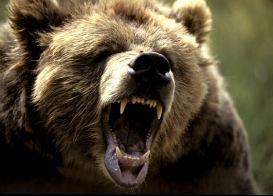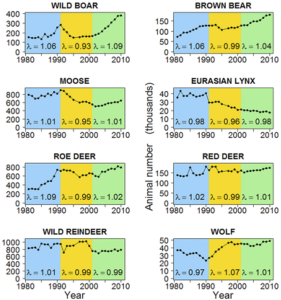 Global human society is a massive, consumptive beast that on average degrades its life-support system. As we’ve recently reported, this will only continue to get worse in the decades to centuries to come. Some have argued that as long as we can develop our societies enough, the impact of this massive demographic force can be lessened – a concept described by the environmental Kuznets curve. However, there is little evidence that negative societal impact on the environment is lessened as per capita wealth exceeds some threshold; unfortunately environmental damage tends to, on average, increase as a nation’s net wealth increases. That’s not to say that short-term improvements cannot be achieved through technological innovation – in fact, they will be essential to offset the inexorable growth of the global human population.
Global human society is a massive, consumptive beast that on average degrades its life-support system. As we’ve recently reported, this will only continue to get worse in the decades to centuries to come. Some have argued that as long as we can develop our societies enough, the impact of this massive demographic force can be lessened – a concept described by the environmental Kuznets curve. However, there is little evidence that negative societal impact on the environment is lessened as per capita wealth exceeds some threshold; unfortunately environmental damage tends to, on average, increase as a nation’s net wealth increases. That’s not to say that short-term improvements cannot be achieved through technological innovation – in fact, they will be essential to offset the inexorable growth of the global human population.
So poor nations as well as the wealthy ones are responsible for environmental damage. Poorer nations often have ineffective governance systems so they fail to enforce compliance in environmental regulations, but wealthier nations often exploit a high proportion of their natural resources, with the inevitable environmental damage this entails. In some cases however, biodiversity can temporarily escape some of the ravages of society because humans either perceive the area to be too dangerous, or otherwise have no incentive to go there. There are some good examples of the latter, such as the vicinity around the Chernobyl nuclear reactor that melted down in 1986, or the Korean demilitarised zone.
In this vein, I just stumbled across an extremely interesting paper today published online early in Conservation Biology that describes trends in charismatic wildlife (i.e., big mammals) as the former Soviet Union collapsed in 1991 and societal breakdown ensued. The authors had access to an amazing dataset that spanned the decade prior to the collapse, the decade immediately following, and a subsequent decade of societal renewal. What they found was fascinating.
Before we get to the really interesting ecology, it’s instructive to illustrate just how quickly it all turned to tears after the Soviet Union collapsed. A widespread ‘poverty shock‘ and an associated ‘suicide epidemic‘ ensued; indeed, poverty increased many fold after 1991, and the death rate among working-age men increased by 74%. Not a nice time to be in country.

But the story doesn’t end there – many of the declining species started to recover after the Russian Federation gained its feet and began functioning as a more organised society. Another interesting side-effect of the collapse was that about 40% of European Russia farmland was abandoned, leading to a great expansion of early successional forest by the 2000s that benefitted species such as bears, moose and deer.
There are plenty of subtle results, nuances and complexities in this story, and certainly all the underlying causal factors haven’t yet been determined. Suffice it to say that it’s an interesting take-home message for conservation: even abundant species can need careful monitoring during times of societal turmoil. An obvious complication is that the study only examined large mammals – I wonder what happened to many of the smaller and non-monitored species as Soviet society broke down and subsequently recovered.
CJA Bradshaw

